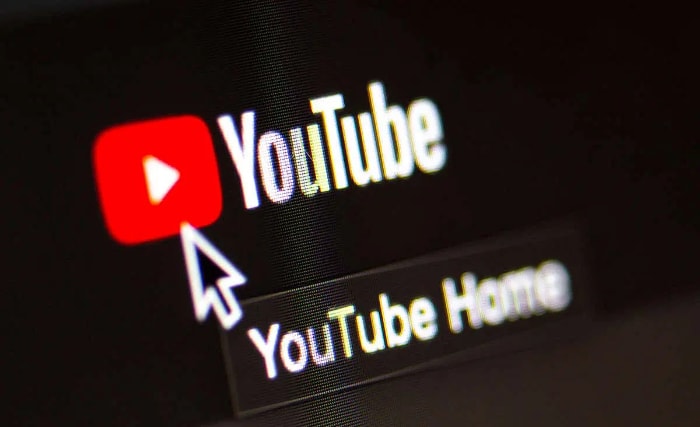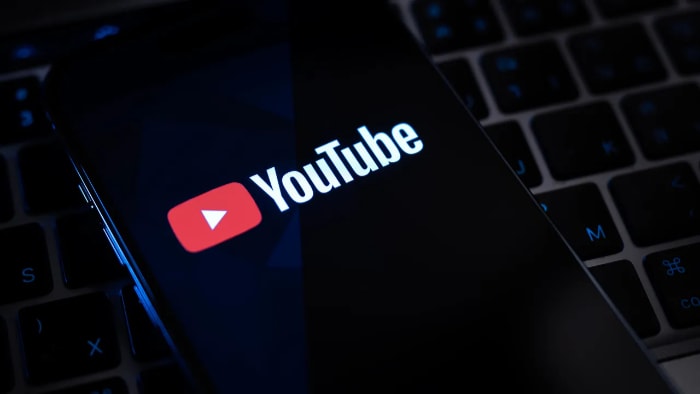Speed Up YouTube: Quick Fixes for Slow Loading

Experiencing slow loading speeds on YouTube can be incredibly frustrating, especially when you're eager to watch that newly released trailer or a tutorial that could solve a pressing issue. Not only does this problem interfere with your viewing pleasure, but it can also be disruptive if you rely on YouTube for educational content or work-related tasks.
This article aims to tackle this problem head-on, providing a comprehensive guide to understanding why YouTube might be slow for you and, more importantly, how to fix it.
Causes of Slow YouTube Loading
Slow YouTube loading can hamper your streaming experience and may occur due to various factors. Some may be within your control, while others may be external issues requiring a different resolution approach.
Internet Connection Weaknesses
A weak or unstable internet connection is one of the most straightforward causes of slow YouTube loading. The speed of your internet service plays a critical role in how fast videos load and play.
If your network lacks the bandwidth to support high-quality streaming, you will inevitably encounter slow loading times.
Accumulation of Browser Cache
Your web browser stores temporary data known as cache to speed up subsequent visits to the same website. However, an overaccumulated cache can slow down YouTube streaming.
It might contain outdated or corrupted files that interfere with the proper functioning of the website.
Hardware Limitations
The device you're using to watch YouTube videos can also be a contributing factor to slow loading times. Older devices may lack the processing speed and memory required to stream videos efficiently, leading to lag and buffering issues.
ISP Throttling
Another often-overlooked issue is that your Internet Service Provider (ISP) might be throttling your connection, particularly when you are streaming videos. This limitation can cause YouTube and other streaming services to load slower than other websites.
Server-Side Issues
Last but not least, the problem may not always lie on your end. YouTube's own servers may be experiencing difficulties, whether due to maintenance, high traffic, or other issues.
Such server-side problems can result in slow loading times for users globally, regardless of their internet speed or device quality.
By taking into account these potential causes, you can more effectively diagnose and tackle the issue of slow YouTube loading, enhancing your overall viewing experience.
Diagnosing the Issue
Before applying any fixes to improve YouTube's slow loading times, it's essential to identify the root cause of the problem. A methodical approach to diagnosing the issue will help you target the most effective solutions.
Below are key areas to examine.
Test Your Internet Speed
The first step in the diagnostic process should be to assess the quality of your internet connection. Websites like Speedtest.net or Fast.com provide an easy way to measure your download and upload speeds.
If you find that your network is slower than expected, it's likely contributing to your YouTube loading issues.
Examine Cache
If your internet speed checks out, your browser's cache is the next area to look into. Old or corrupted data can affect how YouTube runs.
To verify this as a potential issue, try running YouTube in incognito or private mode, which usually disables the cache.
Check for Software Interference
Browser extensions can often be the culprits when it comes to YouTube's performance issues. Disable each extension one at a time and reload YouTube to identify any particular add-on causing the slowdown.
While it's less likely, also consider whether any recently installed or updated software could be consuming significant network resources, indirectly affecting your streaming speed. By ruling out software interference, you narrow down the list of possible issues affecting YouTube loading times.
Monitor Device Performance
Sometimes, the device you're using may be the weak link in the chain. If it's running multiple applications or has limited available memory, this could affect your ability to stream videos smoothly.
Keep an eye on your device’s performance metrics like CPU and memory usage to see if hardware limitations might be a factor.
By carefully examining these areas, you can narrow down the potential causes of slow YouTube loading times. This will allow you to apply the most effective fixes, saving you both time and frustration in the long run.
Solutions for Slow YouTube Loading

Once you have identified the potential reasons behind the slow YouTube loading times, the next step is to apply targeted solutions.
Improving Internet Connection
If your internet speed is the primary issue, there are several ways to improve it. You might consider upgrading your internet plan for higher speed and greater bandwidth.
Alternatively, simply moving closer to the router can sometimes improve Wi-Fi signal strength. If possible, switching to a wired Ethernet connection can offer a more stable and faster internet connection.
Clearing Cache
If you've discovered that an overloaded cache is the culprit behind your YouTube slowdown, taking steps to clear it can often result in a significant improvement. Every browser offers specific methods for clearing the cache, which can usually be found in the browser's settings.
Disable Unnecessary Extensions
If a browser extension is causing YouTube to slow down, disabling it is the most straightforward solution. You can manage your extensions from your browser settings, where you'll have the option to disable or remove them entirely.
Remember to restart the browser after making these changes to ensure they take effect.
Adjust Video Quality
Another tactic to improve loading time is to lower the video quality. YouTube automatically selects a video quality based on your internet speed, but sometimes it may not accurately reflect what your network can handle.
Manually adjusting to a lower resolution can result in faster loading times.
Use a VPN
If you suspect that ISP throttling is limiting your YouTube streaming capabilities, using a VPN can help you bypass such restrictions. Among the numerous VPN services available, NordVPN comes highly recommended.
It provides robust security features and a large network of servers, which can mask your IP address effectively. This can result in a potentially faster and more stable connection, improving your YouTube streaming experience.
Advanced Solutions
For those who have tried basic troubleshooting methods without success, there are advanced techniques that can be deployed to tackle the issue of slow YouTube loading times.
Custom DNS Configuration
Sometimes, the slow loading of YouTube videos can be attributed to inefficient Domain Name System (DNS) servers. Your Internet Service Provider (ISP) usually assigns these, but they may not always offer the best speed.
Utilizing more efficient DNS servers, such as those provided by Cloudflare and Google, can often improve your internet performance, including YouTube loading times.
Cloudflare and Google DNS
- Cloudflare: Known for its focus on privacy and speed, Cloudflare DNS servers can be set at 1.1.1.1 for IPv4 or 2606:4700:4700::1111 for IPv6.
- Google DNS: Google also provides reliable and fast DNS servers, with IPv4 addresses at 8.8.8.8 and 8.8.4.4, and IPv6 addresses at 2001:4860:4860::8888 and 2001:4860:4860::8844.
How to Change DNS Servers
Windows:
- Open Control Panel, then go to Network and Sharing Center.
- Choose “Change adapter settings,” right-click your current network, and select “Properties.”
- Select the “Internet Protocol Version 4 (TCP/IPv4)” and click “Properties.”
- Choose “Use the following DNS server addresses” and input the new DNS addresses.
MacOS:
- Open System Preferences and go to the Network section.
- Select your current network and click “Advanced.”
- Navigate to the DNS tab and click the ‘+' button to add new DNS servers.
Hardware Acceleration
Certain modern browsers offer a feature known as hardware acceleration, which utilizes your computer's GPU to speed up tasks like video playback. While this is generally a feature intended to improve performance, it may not always work as expected and could slow down YouTube videos.
You may want to try toggling this feature on or off to see if it affects your streaming speed. This option can usually be found in the browser's settings under the “Advanced” section.
Quality of Service Settings on Router
Many modern routers come with Quality of Service (QoS) settings that allow you to prioritize certain types of traffic over others. By setting YouTube or video streaming as a priority, you can ensure that these services get a larger share of your bandwidth, thus improving loading times.
Update Network Drivers
Outdated or incompatible network drivers can often lead to poor internet performance. Ensure that your network adapter drivers are up-to-date by visiting the manufacturer's website or using the device manager on your system to check for updates.
An updated driver can resolve compatibility issues and improve your internet speed, benefiting your YouTube viewing experience.
Video Download for Offline Viewing
If streaming remains a challenge due to slow loading times, downloading videos for offline viewing can be a viable solution. The most compliant way to do this while adhering to legal constraints is by opting for YouTube Premium.
This subscription service offered by YouTube allows you to download videos directly within the app for uninterrupted offline viewing. Note that these downloaded videos are intended for personal use and cannot be transferred to other devices or platforms.
Conclusion
Optimizing YouTube loading times involves a multi-faceted approach that ranges from basic fixes to more advanced solutions. Whether the issue stems from internet connection, browser configurations, or other factors, several methods are available to tackle the problem effectively.
Simple tactics such as improving your internet connection or clearing browser cache can often yield instant improvements. For those requiring more advanced solutions, altering DNS settings or updating network drivers offers additional routes to smoother and faster streaming. By combining these strategies, you can enhance your YouTube viewing experience, making slow loading times a concern of the past.


